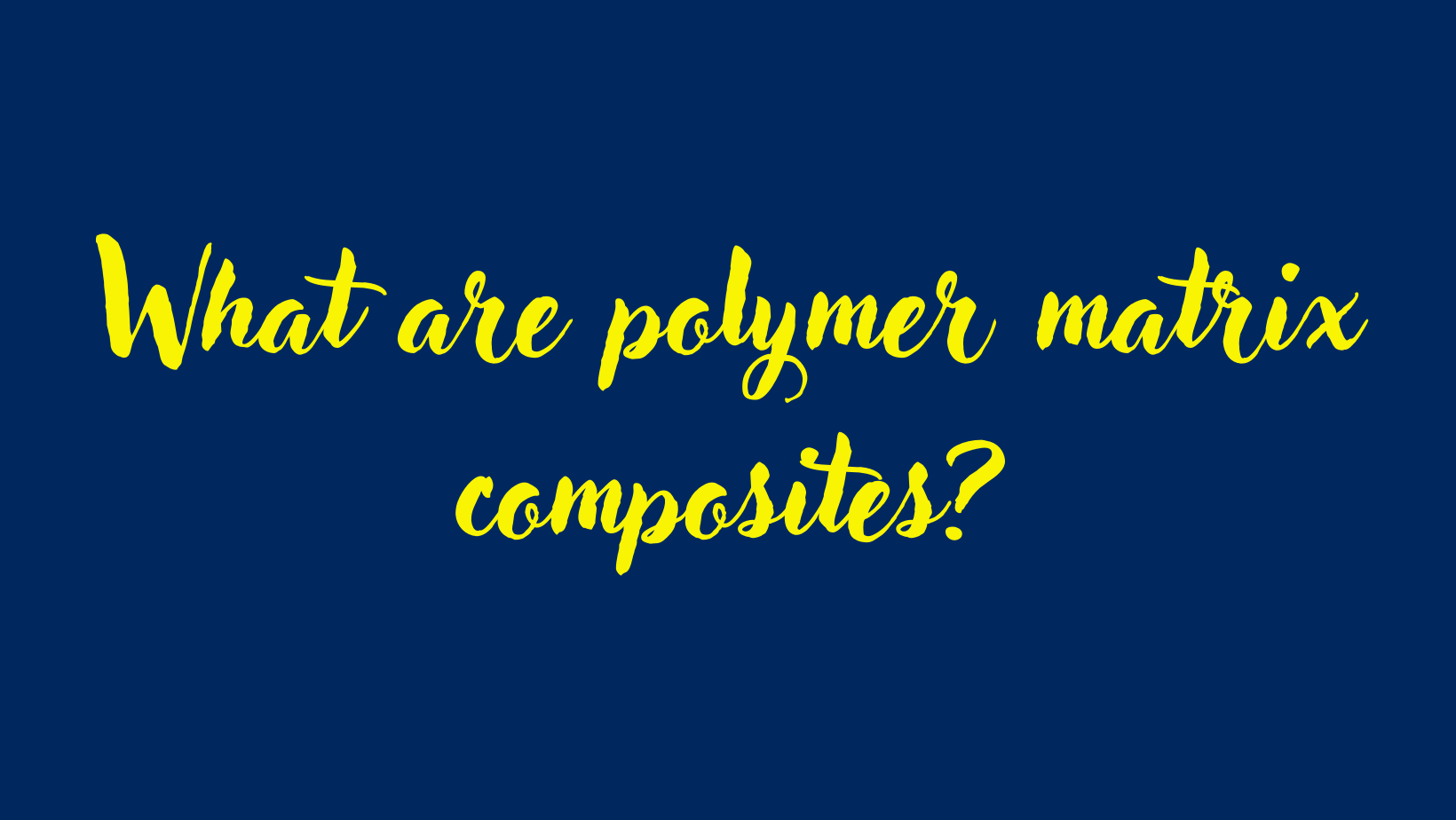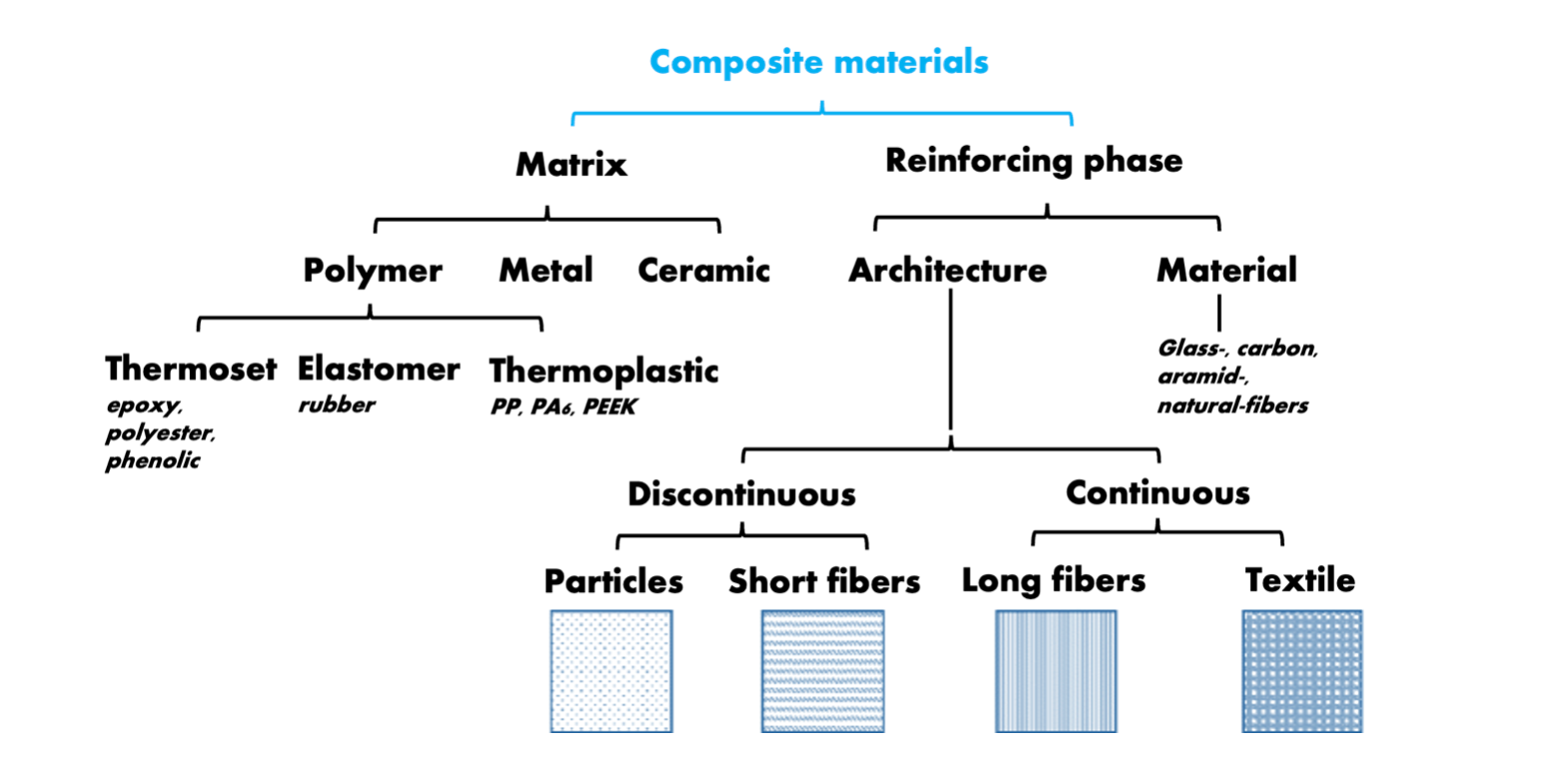What are polymer matrix composites?
Polymer matrix composites (PCM) are multi-phase materials consisting of a polymeric matrix in which short or long (continuous) fibers or particles are homogeneously dispersed.

PCMs are characterized by high matrix/filler interfacial adhesion and performance far superior to that of virgin polymers. For example, they have high stiffness, high strength along the alignment direction of fillers and good abrasion resistance. These good properties can only be achieved thanks to the role played by the polymer matrix in connecting the fibers together and allowing the transfer of stresses between them. PCMs are extensively used in a wide range of high-tech engineering products, e.g. in transportation (aircraft, boats, warship), marine structures and sports goods (rackets, rowing eights, fishing rods), and many others.

Classification of polymer composites.
What polymers are generally used?
Either thermosets or thermoplastics. Thermosets, including epoxies, phenolics, polyurethanes, and polyimides, are by far the predominant type in use today. Among them, epoxy systems currently dominate the advanced composite industry.
What fibers are generally used?
Glass-, carbon-, aramide- and natural-fibers are the commonest ones. Among aramid fibers the commonest are poly(p-phenylene terephthalamide, known as Kevlar™, and poly(m-phenylene terephthalamide), known as Nomex™.
What particles are generally used?
Graphite and carbon black are two examples.